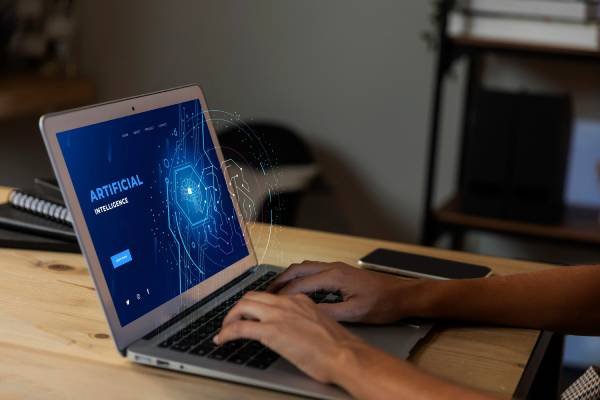Integrating Security and Compliance in Healthcare IT Systems
The healthcare industry is becoming digitalized, and IT systems are at the forefront of providing better patient care, efficient operations, and better access to information.
Digitalization introduces serious challenges, the foremost of which are security and compliance. Healthcare IT systems handle confidential patient information and thus are among the prime cyber targets.
Besides this, healthcare organizations need to follow strict regulatory controls (e.g., HIPAA, GDPR) to maintain patient confidentiality and data encryption in healthcare. This blog talks about the Healthcare IT Security Compliance as well as highlights current trends, challenges, and best practices.
The Importance of Healthcare IT Security Compliance
Healthcare data security is maintaining patient information away from the reach of hackers and other menaces. Data protection is needed in all firms, but especially so in healthcare. Due to the sensitive nature of health information, the industry is uniquely tasked with protecting cybersecurity environments. Tell us why it matters:
1. Protecting Sensitive Patient Data
Health IT systems store and handle huge amounts of confidential patient data, including medical history, treatment plans, and billing. All this is highly sought after by cyber criminals, who may use it to commit identity theft, health plan fraud, and other criminal uses. Compromise of patient data carries deep financial consequences, brand harm, and litigation.
2. Key Regulations and Standards
Healthcare organizations are governed by a broad set of regulations that protect patient confidentiality and offer data protection. The most significant regulations are: HIPAA compliance in healthcare: HIPAA is the United States standard for protecting sensitive patient data. HIPAA requires healthcare organizations to implement safeguards to ensure the confidentiality, integrity, and availability of electronically protected health information (ePHI).
General Data Protection Regulation (GDPR): GDPR will impact healthcare organizations that operate in the European Union. GDPR mandates strict data protection in healthcare procedures and provides patients greater autonomy over their personal data.
Health Information Technology for Economic and Clinical Health (HITECH) Act: HITECH extends HIPAA by promoting electronic health record (EHR) usage and imposing greater penalties on non-compliance.
3. Building Patient Trust
Patients entrust their most personal information to the hands of healthcare workers. Confidentiality and integrity of the information are the basis for patient trust. Loss of trust can lead to patients leaving and damaging the organization's reputation.
Also Read - Analyzing Trends and Key Statistics in the Healthcare IT Market
Best Practices for Integrating Security and Compliance in Healthcare IT

1. Periodic Risk Assessment
Periodic risk assessments are critical to identify vulnerabilities in healthcare IT systems. The assessments need to look at the security stance of all systems, such as EHRs, medical devices, and cloud services. The results need to be used in developing a robust security strategy.
2. Implement a Zero Trust Architecture
A Zero Trust model assumes that no device or user within or without the network should ever be automatically trusted. Device integrity and identity validation must be done continuously to reduce the likelihood of unauthorized access.
3. Encrypt Data at Rest and in Transit
Encryption is an essential component of information security. Patient information at rest (stored) and in transit (transiting data between systems) must be encrypted by healthcare organizations. Data cannot be accessed if intercepted by accident or illegally during transit.
4. Implement Multi-Factor Authentication (MFA)
MFA adds additional security since it requires users to present two or more identities before accessing systems. It may be something they know (password), something they have (cell phone), or something they are (biometric information).
5. Software Updates and Patch Management
Software that lacks updates serves as the primary door for cyberattacks to occur. Every healthcare organization needs to implement effective patch management protocols that verify that their software, together with operating systems and applications, stays up to date with security updates.
6. Train Employees on Cybersecurity Best Practices
Training staff members to follow best cybersecurity practices is one of the necessary components of risk mitigation. The main reason for data breach occurrence stems from human mistakes. The periodic training of healthcare staff includes security best practices for phishing attacks, password creation, and data security protocols.
7. Enforce Network Segmentation
Segmentation of networks is the process of dividing a network into subnetworks with separation between segments so that the spread of cyberattacks is contained within them. Separating patient information systems from admin systems, for instance, keeps an attack on a segment from impacting the rest of the network.
8. Monitor and React to Threats
Regular surveillance of healthcare IT infrastructure is critical to identify and react to threats in real-time. Security Information and Event Management (SIEM) systems can assist organizations in tracking network activity, recognizing abnormal behavior, and reacting to incidents in a timely manner.
9. Create and Test an Incident Response Plan
An incident response plan defines what to do when there is a security incident. Healthcare organizations must create a detailed plan and regularly run training exercises so everyone involved knows their role in an incident.
10. Hire Third-Party Security Experts
Due to the sophistication of healthcare IT regulations and the changing threat landscape, most organizations need to hire third-party security professionals. They can offer specialized knowledge, carry out security audits, and help with compliance.
Also Read - Ensuring HIPAA Compliance: A Key Priority for Medical Software
Major Healthcare Data Security Risks
Health data is quite possibly the most sought-after target of attackers. Stolen health records can be utilized by the attackers to commit identity theft, receive treatment on someone's identity, or even file false insurance claims. Attackers steal patient data in the majority of instances for resale on the dark net or even for extorting money from healthcare organizations.
In order to protect sensitive patient information, healthcare workers need to be aware of the most common forms of cybersecurity threats. The following are five of the most serious threats to the security of health information:
1. Ransomware Attacks
Ransomware is an attack wherein attackers steal and encrypt the data of an organization and make it unusable. Attackers intimidate the organization for releasing the stolen files unless it pays ransom in cryptocurrency. Attackers can irrevocably destroy or leak the files if the organization refuses to pay the ransom.
For hospitals and clinics, ransomware is disastrous. When patient data, test reports, and appointments are taken hostage, it becomes challenging for doctors to treat patients. In the absence of a proper backup system or security mechanism, the attack can wreak havoc and even result in loss of lives.
2. DDoS Attacks (Distributed Denial of Service)
DDoS aims to overwhelm a healthcare organization's network with humongous amounts of traffic so that patients and staff are unable to access key services. The compromised computers or "bots" employed by cyber attackers are utilized to saturate patient portals, websites, and internal networks so that they will be unresponsive or will crash.
Such attacks have the ability to stall doctors from retrieving medical history, decelerate processes that are critical in character, and anger patients who rely on web-based healthcare services. Just like how there are numerous iterations of DDoS attacks, hospitals need effective security platforms capable of recognizing and breaking off these attacks without intervention before causing devastation.
3. Insider Threats
Most healthcare organizations focus on preventing outside cyberattacks, but internal attacks could be just as deadly. Employees, contractors, or even someone with access to the system can, knowingly or unknowingly, spill sensitive information.
Some of the insiders will publish information inadvertently—such as having poor passwords or releasing information to the wrong person. Others will do it on purpose, typically for financial gain, selling patient data or misusing access to systems. Since these insiders already have a level of knowledge about the security setup of the organization, their activity can be harder to detect.
To reduce insider threats, healthcare organizations must provide regular employee training in cybersecurity best practices and monitor suspicious activity within their networks.
4. Electronic Medical Record (EMR) Vulnerabilities
Electronic Medical Records (EMRs) hold confidential patient information, including medical history, medications, and treatment schedules. EMRs increase efficiency and patient care but also pose security risks, especially when they are stored on cloud-based platforms.
Unless protected securely, the hackers can intercept and steal personal medical data. The risk worsens when patient data are stored in countries with weak cybersecurity laws, thus giving cybercriminals a greater opportunity to exploit loopholes in defense.
Healthcare providers and facilities must ensure EMRs remain secure using encryption and access limitations to protect them from unauthorized observation.
5. Internet of Medical Things (IoMT) threats
The Internet of Medical Things (IoMT) is the growth of network-enabled smart medical equipment—heart monitors, insulin pumps, and fitness trackers, for instance—connected to hospital networks. As wonderful as the devices are in supporting patient care and increasing access to health information, they introduce new security risks.
Since most of these devices have weak security measures, they can be used by hackers as a portal into the core network of a hospital. Once inside, cybercrooks can move around within the system, seeing patient data, medical equipment, and other confidential details.
To protect themselves against IoMT threats, healthcare organizations need to ensure that all devices that are connected are properly secured, updated, and monitored for malicious activity.
Also Read - Top 10 Types of Healthcare Software: Features, Benefits, and Costs healthcare software solutions
The Role of Emerging Technologies & Tools in Healthcare IT Security Compliance
1. Artificial Intelligence (AI) and Machine Learning (ML)
AI and ML are increasingly being employed to drive cybersecurity in healthcare forward. Both technologies can sift through massive amounts of information to search for trends and identify anomalies that may be predictive of a cyber attack. As an example, AI-driven systems can watch for suspicious logins or flag up unusual network traffic.
2. Blockchain Technology
Blockchain technology offers a decentralized and tamper-evident method of data storage and sharing. In the healthcare sector, blockchain can be used to protect patient records in a manner that the information is readable and editable by authorized persons only. This can ensure data integrity and reduce unauthorized access.
3. Cloud Security Solutions
Healthcare organizations that use cloud services have made cloud security solutions significantly more important. These products enhance cloud security through features like encryption threat detection services and access management tools that protect stored information.
4. Internet of Medical Things (IoMT) Security
The increase of networked clinical devices, or the Internet of Medical Things (IoMT), poses fresh security concerns. Solutions for the security of IoMT are developed in order to secure healthcare systems from cyber attacks in such a manner that these may run safely and reliably.
5. Privacy-improving technologies (PETs)
PETs protect personal information while enabling its use for both analysis and decision-making activities. Two prominent PETs include differential privacy, which adds noise for individual anonymity, and homomorphic encryption, which enables undisclosed data processing.
Challenges in Merging Security and Compliance in Healthcare IT
1. Growing Sophistication of Cyber Threats
Cybercriminals continuously develop new approaches, and it is difficult for healthcare organizations to match their pace. Ransomware attacks, phishing attacks, and advanced persistent threats (APTs) are becoming increasingly sophisticated, exploiting weaknesses in Healthcare IT Security Compliance.
3. Resource Constraints
Different healthcare organizations, especially smaller-sized ones, have limited resources, and therefore, it poses a difficulty for them to invest in efficient security mechanisms. This includes inefficient, skilled cybersecurity personnel, limited financial strength, and outdated infrastructure.
4. Regulatory Complexity
It is simple to become confused with the complex environment of health care regulations. Organizations have to adhere to numerous regulations, each including its own set of needs. Failure to comply with these regulations may lead to significant fines and legal action.
5. Security vs. Usability
Tight security procedures in place may sometimes decrease the usability of health IT systems. Multi-factor authentication, for instance, is more secure but slows down access to the system by the health professionals who will eventually use it while giving patient care.
Solutions for Healthcare IT Security Compliance
It is a continuous process to ensure that Healthcare IT is secure and compliant with regulations. Cyber threats are constantly evolving, and organizations must stay one step ahead by continuously monitoring their networks and remediating risks.
A good cybersecurity risk management program ensures compliance and protects sensitive patient data. These are some of the major strategies to ensure security and compliance best practices in healthcare IT:
Continuous Monitoring
Comprehensive vulnerability scanning must be a continuous process because cyber threats rapidly transform in their nature. A periodic approach to security scanning increases the risk of compliance violations that occur during scanning periods that are not continuously monitored.
Active threat monitoring combined with speedy response measures to detect threats leads organizations to minimize data breach threats and compliance risks.
Third-Party Risk Management
Healthcare organizations predominantly depend on cloud infrastructure and use third-party providers to manage their operational functions. The improved operational efficiency through third-party providers comes with an increased number of security threats. A data breach experienced by a third-party provider automatically incurs damage upon the healthcare organization that has selected them for services.
That is why there must be a Third-Party Risk Management (TPRM) program. There must be regular monitoring by firms of the distributors', suppliers', and service providers' security policies to ensure that they are cybersecure. It will make the whole network environment secure.
Securing Web Applications
Organizations must ensure that there are sufficient security controls to safeguard sensitive data across the entire supply chain. With the expanding Internet of Medical Things (IoMT), more and more medical systems and devices are going online, which means that strict web application security is of utmost importance. Security audits, software patches, and threat analytics tools are the solutions to making such applications secure.
Having Access to Control
The largest security risk to healthcare IT is from within. Internal users, including employees and contractors, have access to confidential information, and if their credentials are compromised—either accidentally or by design—it can result in a security breach. Strong access controls mitigate the risk.
Case Studies: Successful Integration of Healthcare IT Security Compliance
1. Mayo Clinic
The Mayo Clinic, one of the leading healthcare organizations, has also implemented a comprehensive Healthcare IT Security Compliance that includes regular risk assessments, employee training, and advanced threat detection platforms. The clinic also utilizes AI and ML to analyze network traffic and identify potential threats. All these have helped the Mayo Clinic to maintain a strong security posture and comply with regulatory requirements.
2. Kaiser Permanente
Kaiser Permanente, the largest healthcare organization in the United States, has adopted a Zero Trust model to enhance its security. The company uses MFA, network segmentation, and continuous monitoring to protect patient data. Kaiser Permanente also employs third-party security experts to audit and enforce HIPAA and other compliances on a regular basis.
3. University of Pittsburgh Medical Center (UPMC)
UPMC has put in place an all-encompassing incident response plan in the event of potential security breaches. The firm regularly conducts drills on its response mechanism to determine the readiness and preparedness of all stakeholders involved. UPMC also uses blockchain for safeguarding patient histories and enhancing the integrity of the data.
Conclusion
Healthcare IT Security Compliance is a complex but unavoidable task. The rising level of sophistication of cyber attacks, the complexity of healthcare IT ecosystems, and the stringent regulatory environment present strong barriers. However, with the adoption of best practices such as regular risk assessment, Zero Trust architecture, encryption, and employee training, healthcare organizations are able to improve their security posture and keep pace with regulations.
Emerging technologies, including AI, blockchain, and cloud security tools, offer healthcare organizations the ability to continue to upgrade security and compliance efforts. In staying abreast of existing trends and making use of these technologies, healthcare organizations can protect sensitive patient data, maintain patient trust, and avoid the financial and reputational damage that can occur as a result of data breaches.
Last but not least, the union of Healthcare IT Security Compliance is not just a technology problem but part of patient care itself. By making security and compliance their number one priority, healthcare organizations can be assured that they are providing the best quality of care while safeguarding the privacy and trust of their patients.
Frequently Asked Questions

Read more blogs

Time and Cost of Developing an AI like ChatGPT: Key Factors Explored
Explore the factors influencing the time and cost of developing an AI model like ChatGPT. Understand key considerations for successful AI ap

Guide to Successful Real Estate App Development: Features, Technologies, and More
Explore the advantages of developing a real estate app, key features, technologies to employ, and the importance of collaborating with a Rea

Custom vs. Template-Based Website Development: A Comprehensive Cost Comparison Guide
Explore the costs, pros, and cons of custom website development vs. template-based solutions. Make an informed decision for your online pres
